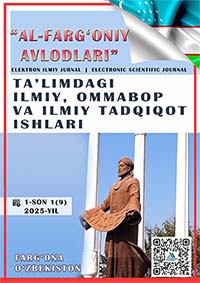Definition of informative features and formalization of the knowledge base for identification of the Stuxnet cyber attack on the Internet of Things system
Keywords:
Stuxnet, Интернет вещей (IoT), информативные признаки, машинное обучение, кибербезопасность, целенаправленные кибератаки, промышленные системы управленияAbstract
This article proposes an approach for detecting and identifying Stuxnet-type cyberattacks in modern Internet of Things (IoT) systems. A model of informative features has been developed, and a knowledge base for detecting such attacks using machine learning methods has been formalized. The proposed approach is based on the analysis of Stuxnet malware characteristics and its adaptation to IoT infrastructure conditions. Experiments were conducted to evaluate the effectiveness of the proposed methods and algorithms. The results demonstrate a high detection accuracy (94.7%) of Stuxnet-type attacks in IoT systems, as well as the capability to identify previously unknown modifications of such attacks.
References
Dow, M. (2023). 10 Years Since Stuxnet: Is Your Operational Technology Safe? Dark Reading.
Garcia-Teodoro, P., et al. (2022). Anomaly-based network intrusion detection: Techniques, systems and challenges. Computers & Security, 28(1-2), 18-28.
Li, X., et al. (2023). Deep learning for IoT security: Current solutions and future challenges. IEEE Internet of Things Journal, 8(12), 10341-10362.
Nguyen, H., et al. (2022). A lightweight machine learning algorithm for IoT intrusion detection. Journal of Network and Computer Applications, 164, 102693.
Raza, S., et al. (2023). Fog-based distributed security framework for IoT systems. Internet of Things, 20, 100282.
Rodriguez-Andina, J., et al. (2022). Real-time hardware implementation of intrusion detection systems for IoT devices. IEEE Transactions on Industrial Electronics, 69(8), 8531-8542.
Tuuli, A. (2020). Detecting Stuxnet-like data integrity attacks. Security and Privacy, 3(1), e107.
Valente, J., & Castro, A. (2023). Cumulative sum control charts for IoT device behavior monitoring. Computer Networks, (195), 109026.
Wang, W., et al. (2021). Blockchain-based IoT security architecture with mutual authentication. IEEE Access, 9, 54939-54950.
Yaseen, Q., et al. (2024). Self-healing IoT security system: Design and implementation. Computer Networks, 209, 108971.
Zhu, J., et al. (2023). Stream processing for real-time monitoring of IoT devices. IEEE Internet of Things Journal, 10(5), 4217-4232.
Additional Files
Published
How to Cite
License
Copyright (c) 2025 Nodirbek O'rinov, Сарварбек Мамадалиев, Махлиёхон Бахрамова, Шохислом Aлижонов , Aсадбек Неъматжонов , Мадина Aкбарова

This work is licensed under a Creative Commons Attribution 4.0 International License.












